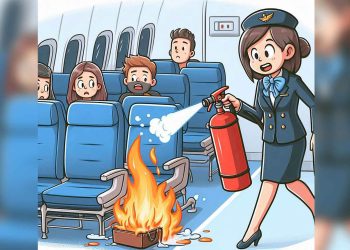The Evolution of Aviation Safety Standards Over the Years
Introduction
Aviation safety has come a long way since the early days of flight. Over the decades, advancements in technology, stringent regulations, and lessons learned from past incidents have significantly improved air travel safety. The development of aviation safety standards has played a crucial role in making flying one of the safest modes of transportation today. This article explores the evolution of aviation safety standards, highlighting key milestones, technological advancements, and regulatory changes that have shaped the industry.
Early Aviation and Initial Safety Measures
- The Pioneering Days (1900s-1930s)
In the early 20th century, aviation was a risky venture. Aircraft were rudimentary, and there were no standardized safety regulations. Pilots relied solely on their skills and experience to navigate and manage potential dangers.
Key Developments:
- The establishment of the first commercial airline in 1914.
- Introduction of basic flight instruments and weather forecasting.
- Formation of the International Civil Aviation Organization (ICAO) in 1944 to establish global aviation safety regulations.
- The Post-War Era and Standardization (1940s-1960s)
After World War II, commercial aviation expanded rapidly, necessitating the development of standardized safety protocols.
Key Safety Improvements:
- Implementation of air traffic control (ATC) systems to manage flight paths and reduce collisions.
- Introduction of black box flight recorders in the 1950s to investigate accidents.
- Establishment of pilot licensing and recurrent training requirements.
The Rise of Modern Safety Standards
- Technological Advancements and Regulatory Oversight (1970s-1990s)
During this period, aviation safety saw significant advancements driven by technology and regulatory reforms.
Notable Safety Enhancements:
- Adoption of the Traffic Collision Avoidance System (TCAS) to prevent mid-air collisions.
- Improved aircraft design, including more durable materials and redundancy in critical systems.
- Strengthening of the Federal Aviation Administration (FAA) and other regulatory bodies to enforce safety standards.
- Mandating cockpit resource management (CRM) training to enhance pilot coordination and decision-making.
- Digital Revolution and Automation (2000s-Present)
The 21st century has witnessed a dramatic transformation in aviation safety, largely due to digital technology and automation.
Key Innovations:
- Real-time aircraft monitoring systems to detect potential malfunctions before they become critical.
- Advanced avionics and automated flight systems to reduce human error.
- Enhanced security measures post-9/11 to prevent terrorist threats.
- Implementation of NextGen Air Traffic Control for more efficient flight routing and safety management.
Lessons from Major Aviation Incidents
Throughout history, aviation safety has improved by learning from past incidents. Some landmark accidents have led to substantial safety enhancements:
- The Tenerife Airport disaster (1977) emphasized the need for improved communication between pilots and ATC.
- The Air France Flight 447 crash (2009) highlighted the importance of pilot training in managing automation failures.
- The Boeing 737 MAX incidents (2018-2019) led to increased scrutiny in aircraft certification and software oversight.
Future of Aviation Safety Standards
- Artificial Intelligence and Predictive Maintenance
With artificial intelligence (AI) and big data analytics, the future of aviation safety will rely heavily on predictive maintenance and automated decision-making.
Upcoming Trends:
- AI-driven diagnostics to predict mechanical failures before they occur.
- Use of drones and remote technology for aircraft inspections.
- Strengthened cybersecurity measures to protect against digital threats.
- Sustainability and Environmental Considerations
As the aviation industry moves towards greener technology, safety standards will evolve to include:
- Stricter guidelines for electric and hydrogen-powered aircraft.
- Improved fire safety measures for lithium-ion batteries.
- Regulations for sustainable aviation fuel (SAF) and its impact on aircraft performance.
Conclusion
Aviation safety standards have evolved significantly over the past century, making air travel safer than ever. Through technological advancements, regulatory oversight, and continuous learning from past incidents, the industry continues to enhance safety measures. As new challenges emerge, such as cybersecurity threats and environmental concerns, aviation safety will continue to adapt, ensuring that flying remains one of the most secure and efficient forms of transportation for generations to come.




